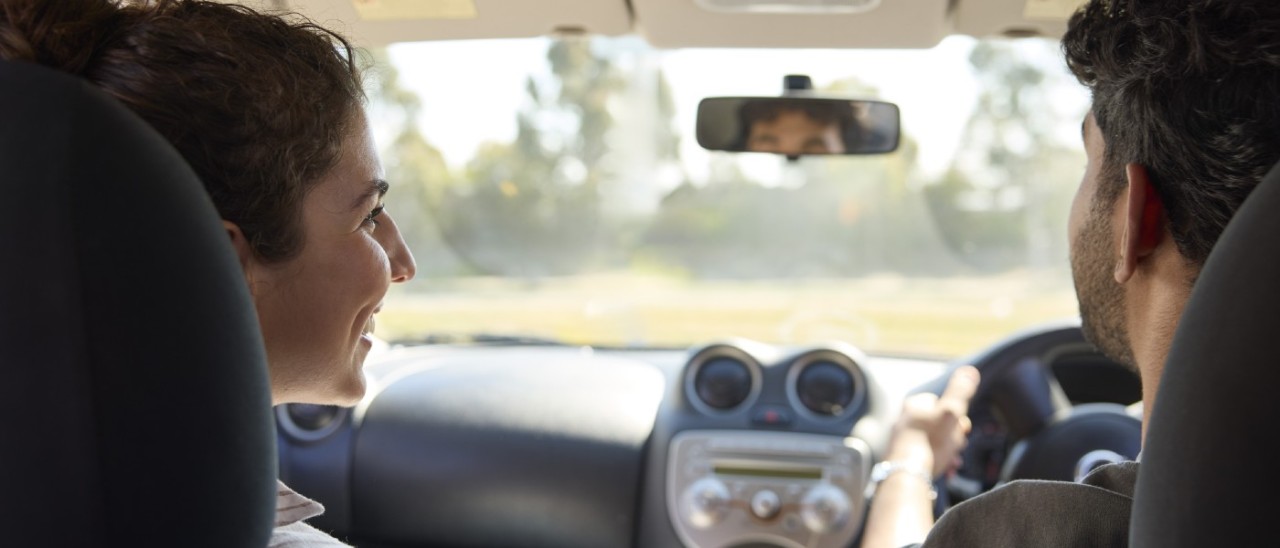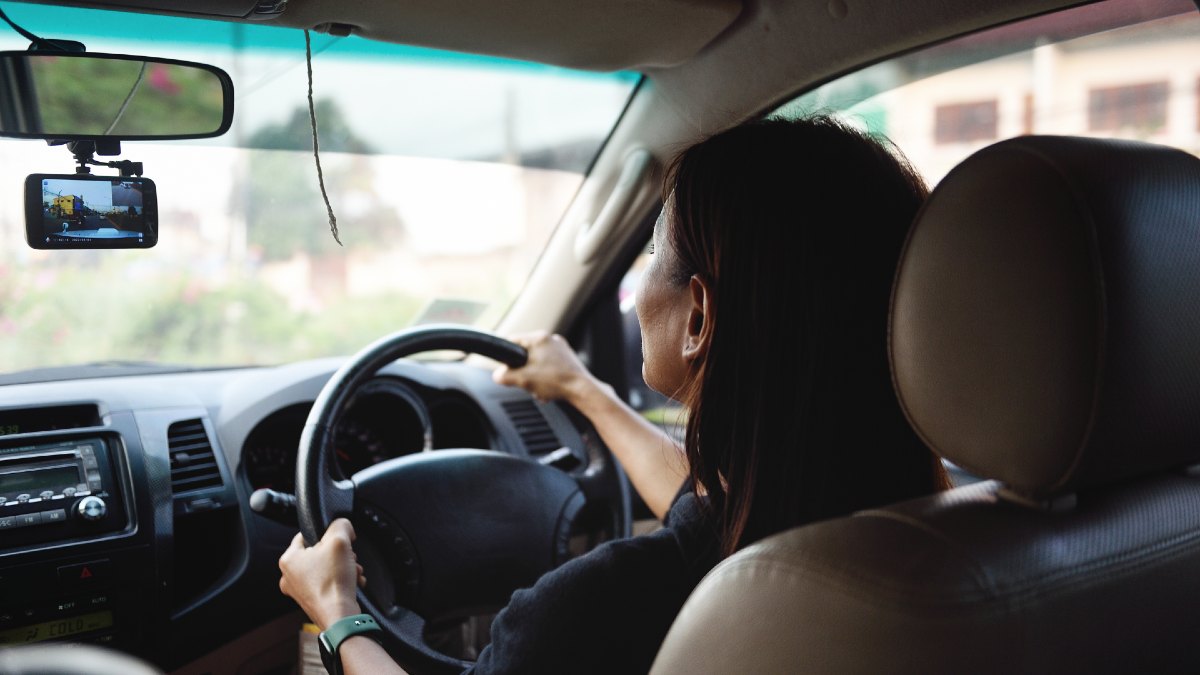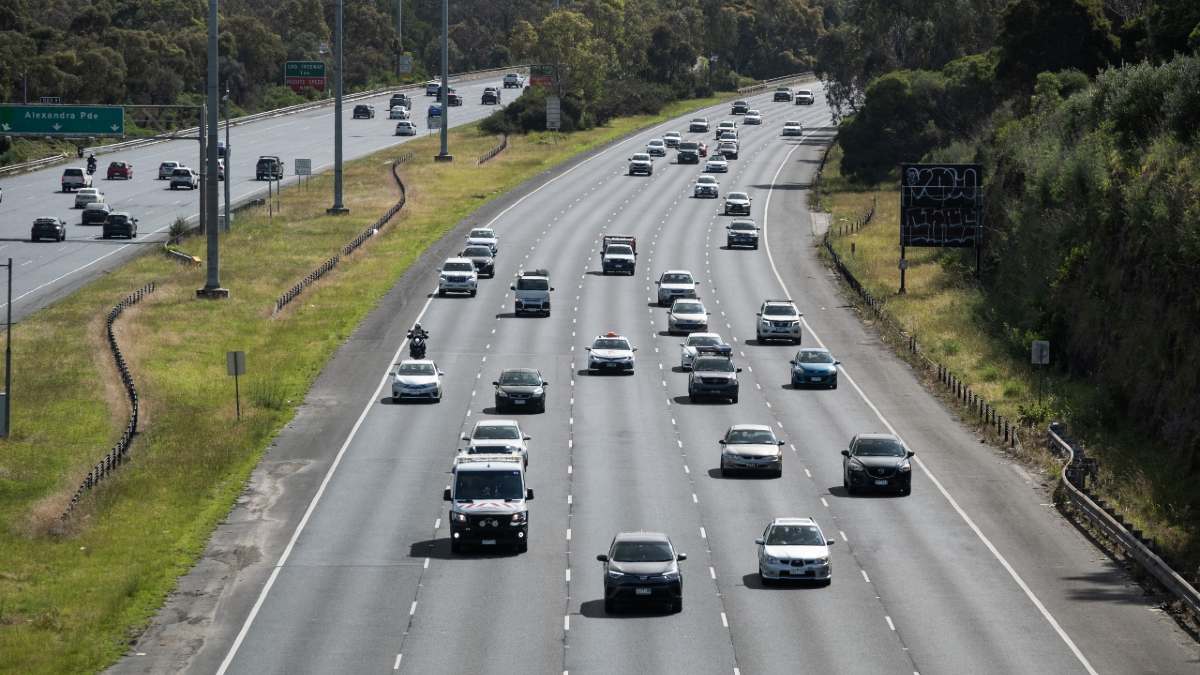Knowing what to do if you see an ambulance, fire or police vehicle on the road is vital to keeping every Victorian safer.
Most common bad and illegal habits of Victorian drivers

Some common driving behaviours like playing with a mobile phone pose real dangers to all road users. This article explores some of the everyday actions that every driver should be aware of to help make Victoria’s roads safer.
Every day, motorists encounter a range of challenges on the road. Among these are some driving behaviours that can compromise safety for all road users.
RACV Drive School instructors observe many of these poor driving habits on Victorian roads - some of which are illegal - including following another vehicle too closely, using a mobile phone while driving, failing to indicate, and incorrect seatbelt use. By recognising and addressing these behaviours, motorists can help make journeys safer for everyone.
Even experienced drivers can develop bad habits or miss updates to road rules. Ongoing lessons and refresher courses help drivers stay up to date with current regulations, adjust to new technologies, enhance safety, and retain confidence behind the wheel.
To become a safer and more confident driver, consider participating in driver education.
Most common illegal and annoying bad driving habits
Not indicating before changing lanes
Most drivers know you're required to indicate when changing lanes. But do you know exactly when you should use your indicator?
RACV Drive School's Driver Education & Development Manager Silvia Morris advises that motorists should start using their indicator before they start changing lanes.
"Your indicator should also be used as a tool to let other road users know your intentions, rather than a just tool to say 'I'm moving right now'," she says. "If you communicate your intention to other road users beforehand, if you missed something then that hazard can potentially try to avoid you."
Don't skip your head checks when changing lanes either. Fully relying on vehicle technology such as blind spot monitoring systems can be unsafe, as these systems can occasionally fail to detect hazards. In addition, these systems may only operate above certain speeds.
Morris recommends always doing a physical head check as a precaution, to avoid vehicles that have already entered your blind spot or are approaching laterally.
Not indicating at roundabouts
One of Melbourne's most dangerous intersections, Greensborough Bypass and Diamond Creek Road Roundabout in Greensborough, is a reminder of how important it is for drivers to use indicators.
Some drivers may be confused about the need to signal when using a roundabout to drive straight ahead, but the law is quite clear.
"What many drivers do not realise is that Victorian legislation states that drivers must signal left before they leave a roundabout when it is practical to do so," Morris says.
This means that when you're going straight through a roundabout, you should signal left after passing the exit before yours, if it is practical and safe to do so.
"It may be impractical to put your indicator on if you are travelling straight through a small roundabout, as your hands will be in motion managing the steering. However, at larger roundabouts where this is practical it can assist with traffic."
The legislation also means you should indicate left when exiting a roundabout on the right.
"If you are turning right at a large roundabout you should start by signalling right, and then change your indicator to a left indicator when you pass the exit prior to the one you plan to take."
Using mobile phones or other electronic devices
Research shows that using a mobile phone while driving can lead to dangerous driving situations. Driver distraction, including mobile phones, is one of the main causes of road crashes. The TAC says drivers are 10 times more at risk of crashing if they are texting, browsing or emailing on their mobile phone.
Victorian road rules restrict the use of a mobile phone while driving. If a mobile phone is properly mounted or in-built, fully licensed drivers can make or receive a phone call, use audio and music functions, and use GPS navigation or use in-built driver assistance or vehicle safety features.
But even if the mobile phone is mounted, fully licensed drivers cannot text, play videos or take video calls, display messages or photos, or place the device on any part of the body.
In the case of an unmounted or loose mobile phone, fully licensed drivers and motorcyclists cannot touch their mobile phone while driving or riding.
Mobile device use while driving – restrictions for Learners, P1/P2 Drivers, and Restricted Motorcycle Licence Holders ('E')
These drivers must not interact with any mobile phone or portable device while driving. This includes:
- Touching the device
- Using voice controls
- Making or receiving calls (audio/video)
- Using an unmounted or loose device for any function.
To use navigation or audio:
- The device must be mounted and set up before driving
- No interaction is allowed while driving
- Pull over and park to adjust settings.
Penalities for using your phone while driving in Victoria can include fines and demerit points, and even licence suspension.
Read more: Understanding mobile phone and portable device road rules
Driving too closely behind a vehicle
Most drivers on our roads drive too close to each other. Morris warns that this dangerous driving behaviour can significantly increase crash risk.
Insurance Manufacturers of Australia (IMA) car insurance data for the year ending June 2025 shows that 14,336 claims were made for a third party hitting the insured in the rear, and 13,542 claims for the insured hitting a third party in rear.
That means drivers need to maintain a safe distance from other vehicles to avoid collisions. Factors that can affect the amount of time it takes for a driver to react include:
- Road conditions, such as poor road surfaces, high traffic volumes and congestion, and poor road design, including dangerous intersections, and inadequate signage
- Weather conditions, including rain, fog, ice, and extreme heat
- Driver alertness and fatigue
- Medications or alcohol
- Vehicle weight
- Tyre condition and tyre pressure
- Brake maintenance status.
This means drivers need to increase their distance according to the number of risks presented.
"We recommend that drivers have a minimum three-second following distance in good conditions. But that needs to change if conditions change. One second should be added for every additional risk factor you encounter," Morris says.
Incorrectly wearing seatbelts
From 1 January to 31 March 2025, seatbelt detection cameras in Victoria captured 7,466 drivers and 5,176 passengers not wearing seatbelts, according to Victorian Government data. Drivers caught by these cameras incurred fines and demerit points.
According to Rule 264 of the Road Safety Road Rules 2017, the driver of a motor vehicle that is moving, or is stationary but not parked, must wear a properly adjusted and fastened seatbelt.
The key phrase for drivers is 'properly adjusted and fastened', which means:
- the seatbelt must be worn over the shoulder and across the chest, not under the arm or behind the back.
- the lap portion should sit low across the hips, not the stomach.
- the seatbelt must be securely buckled at all times while the vehicle is in motion or temporarily stopped (but not parked).

If you're driving along an unfamiliar route, do not brake suddenly or erratically change lanes if you miss your turn-off. Simply drive to the next available turn and resume your desired route safely. Image: Getty
Being inflexible with travel route
Even if printed maps have gone out of fashion, it's still important to be flexible when navigating the roads.
"I've lost count of how many times I've seen drivers brake suddenly or erratically change lanes at the last moment so they can make a turn," Morris says. "This is seriously dangerous behaviour that puts themselves and all the other road users around them at risk."
If you don't have time to make a turn safely, take the next available turn, or perform a U-turn where safe to do so.
Plan your trip before setting out with a flexible journey planner like Arevo.
Not using two hands on the steering wheel
Using two hands on the steering wheel, specifically at the "9 and 3" positions, is the recommended safe practice because it provides better control, allows for quicker steering adjustments, and minimises injury risk from a deploying airbag.
Prior to the inclusion of airbags in cars, it was common practice to teach drivers to position their hands at "10 and 2" on the steering wheel.
"Driving with your hands in this position can actually increase your risk of injury in the event of a collision," Morris reveals.
The National Road Safety Partnership Program now recommends drivers position their hands at "9 and 3", which allows your airbag to safely deploy should you be involved in an accident.

You should use your indicator before you start switching lanes to let other drivers know your intention. Image: Shannon Morris
Never driving on painted traffic islands
A painted traffic island is a striped area of road marked with lines to separate traffic, and often occurs before a dedicated turning lane. Morris says some drivers are unsure if they can drive on this striped section.
Painted islands can have broken lines, continuous lines, or double continuous lines around them. These lines determine whether or not you can drive on the painted island.
If there is one continuous line, you can drive on the island for up to 50m to enter or leave the road or enter a turning lane, according to Transport Victoria.
However, drivers must not drive onto a painted island when entering slip lanes, freeways or other locations where a painted island separates traffic travelling in the same direction. This means that when you are merging onto a freeway, you are not permitted to drive over a painted island on the on-ramp that is surrounded by a continuous line.
Where an island is surrounded by double continuous lines, a driver is prohibited from driving onto the island except to avoid an obstruction, and only if it’s safe.
Using bicycle and bus lanes incorrectly
Motorists are permitted to enter a bike lane up to 50m before turning left, so long as they indicate their intention to turn and give way to cyclists.
"When drivers don't use the bicycle lane before turning, they not only disrupt the flow of traffic, but they also put themselves at a higher risk of a rear end collision if, for example, they unexpectedly stop to give way to a pedestrian," Morris says.
Drivers can likewise use a bus lane for the same purpose and can enter the lane up to 100m from the turn.
It is illegal and dangerous for motorcycles to use bike lanes. Aside from being permitted to enter a bicycle lane 50m before turning left, motorcyclists must not use them for lane filtering.
Only using headlights at night
Your headlights shouldn’t just be used when it gets dark.
"When visibility is impaired due to conditions such as rain or fog, or at dusk, dawn and night-time, I often see motorists driving without their headlights on," says Morris. "Even when it is still light outside sun glare during dusk and dawn can impact visibility and makes vehicles harder to see."
Put your headlights on in these conditions to minimise your risks while driving.
Illegally parking near continuous lines
Did you know it's illegal to park within three metres of a continuous line? Many drivers don't. These lines are commonly found in locations where it is dangerous to park, such as close to intersections or bends in the road. They may also appear where there is poor visibility of oncoming traffic.
"It seems drivers are not aware that it is illegal to park within three metres of a continuous line, unless there is a parking control sign stating otherwise," says Morris. "Parking illegally next to these lines puts other road users at risk when they are forced to travel at a dangerous position in the oncoming lane to manoeuvre around the parked car."
Low-level speeding
You might not think it matters if you're going only a few kilometres over the legal speed limit, but there are very real consequences to even low-level speeding.
"Driving just 3km/h over the speed limit increases your risk of an injury crash by 25 per cent, and driving 5km/h over the speed limit doubles your risk," Morris says.
Exceeding the speed limit is unlikely to get you to your destination faster either.
"Speeding doesn't usually save drivers as much time as might think. For example, over a 10km drive you would save less than one minute if you increased your average speed from 60 to 65km/h," Morris points out.


